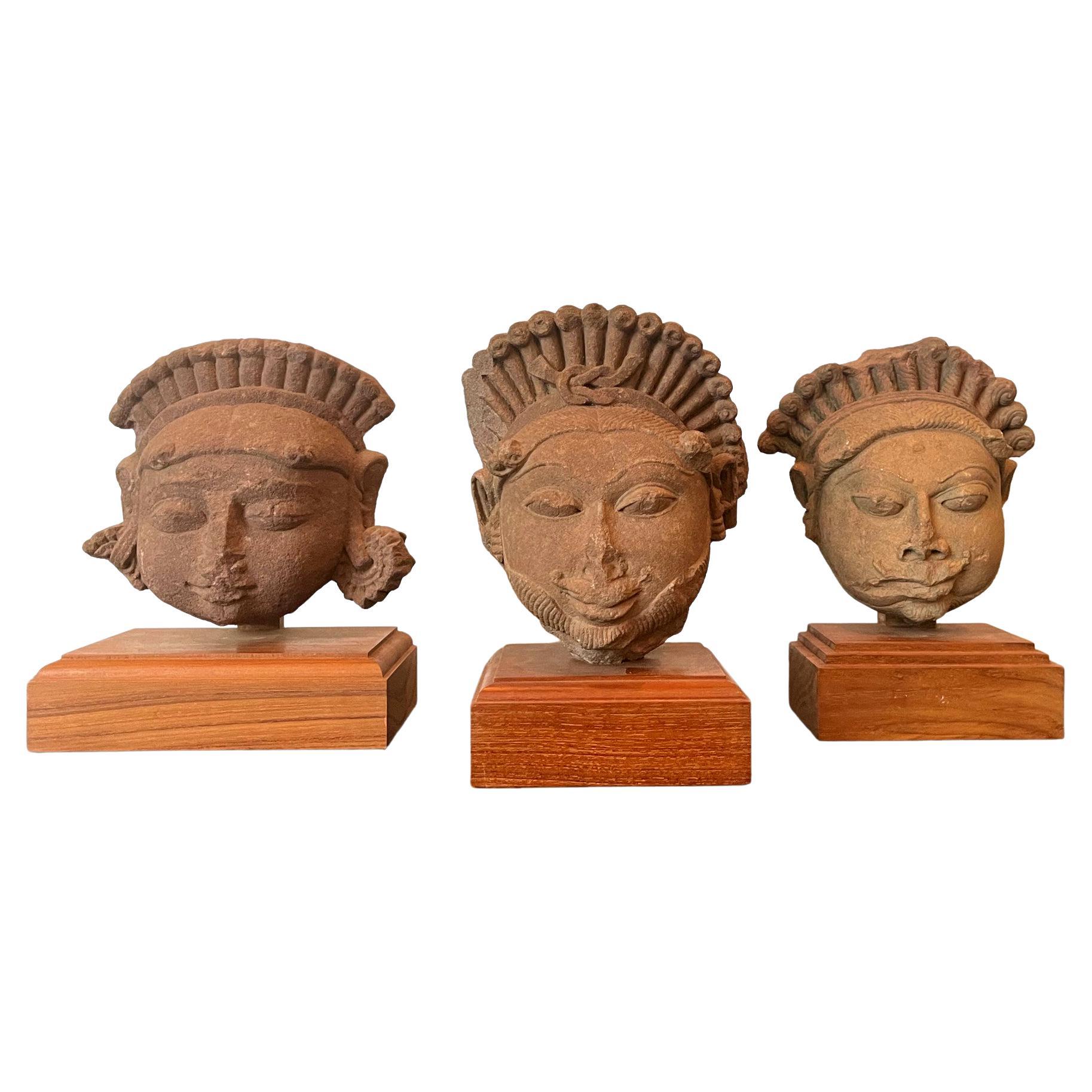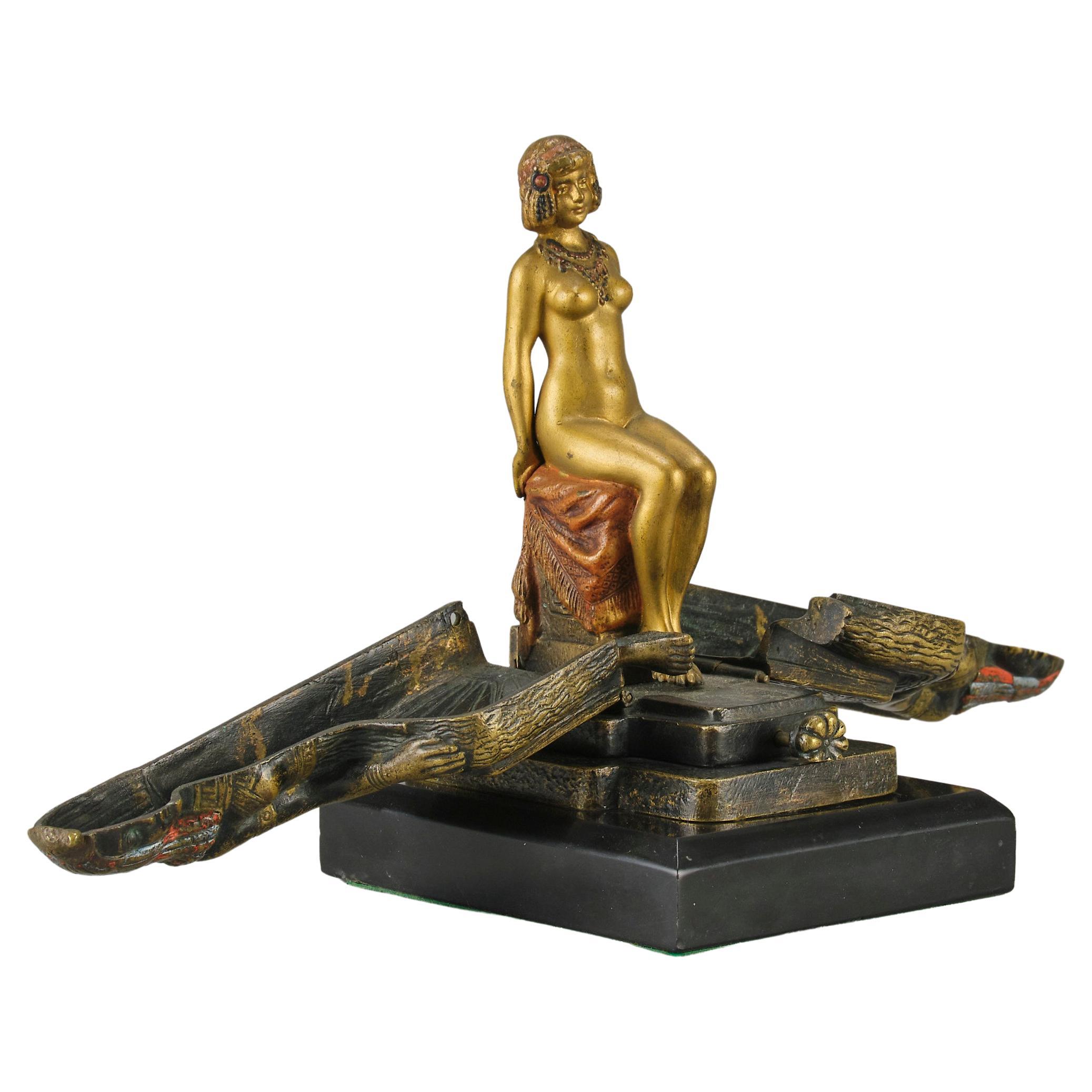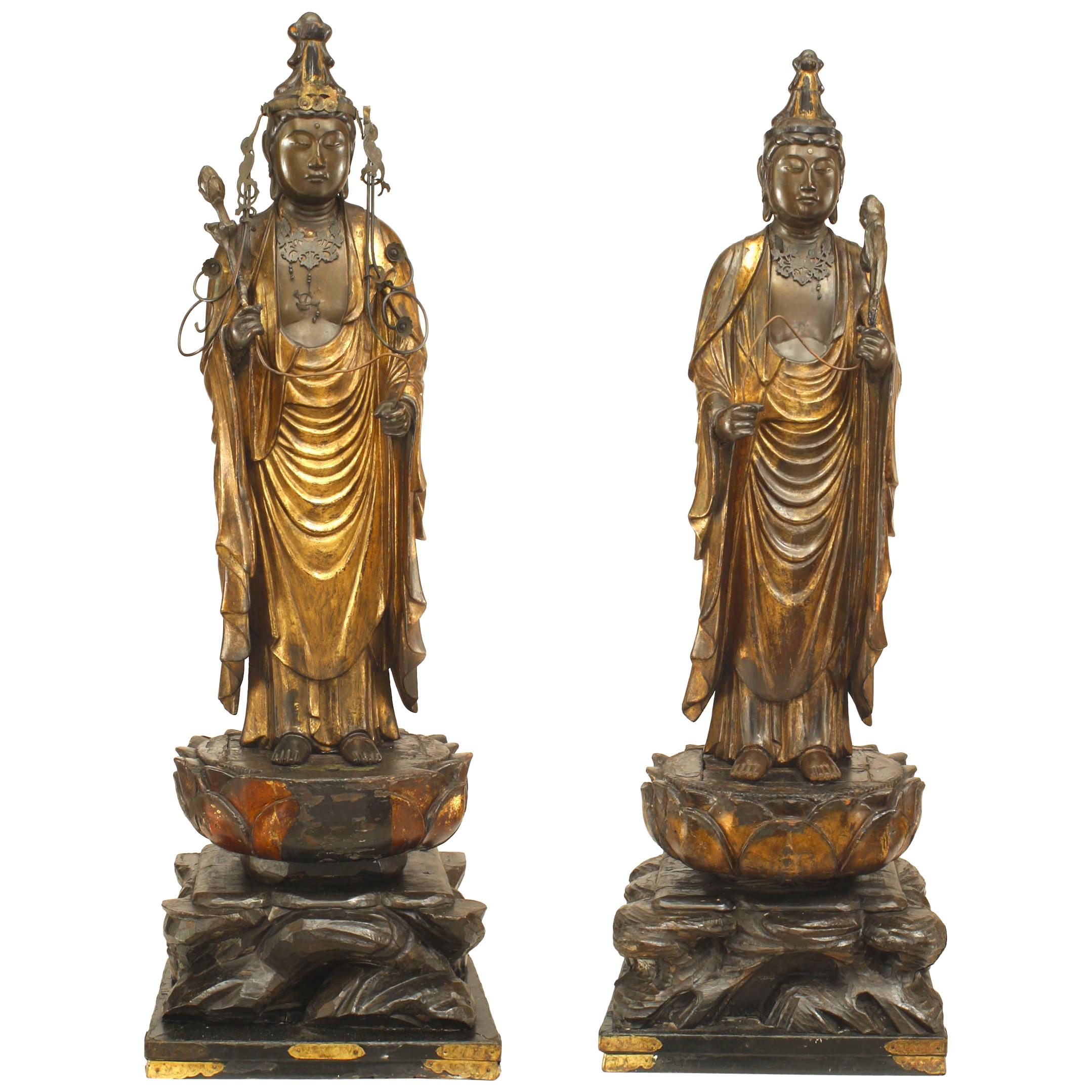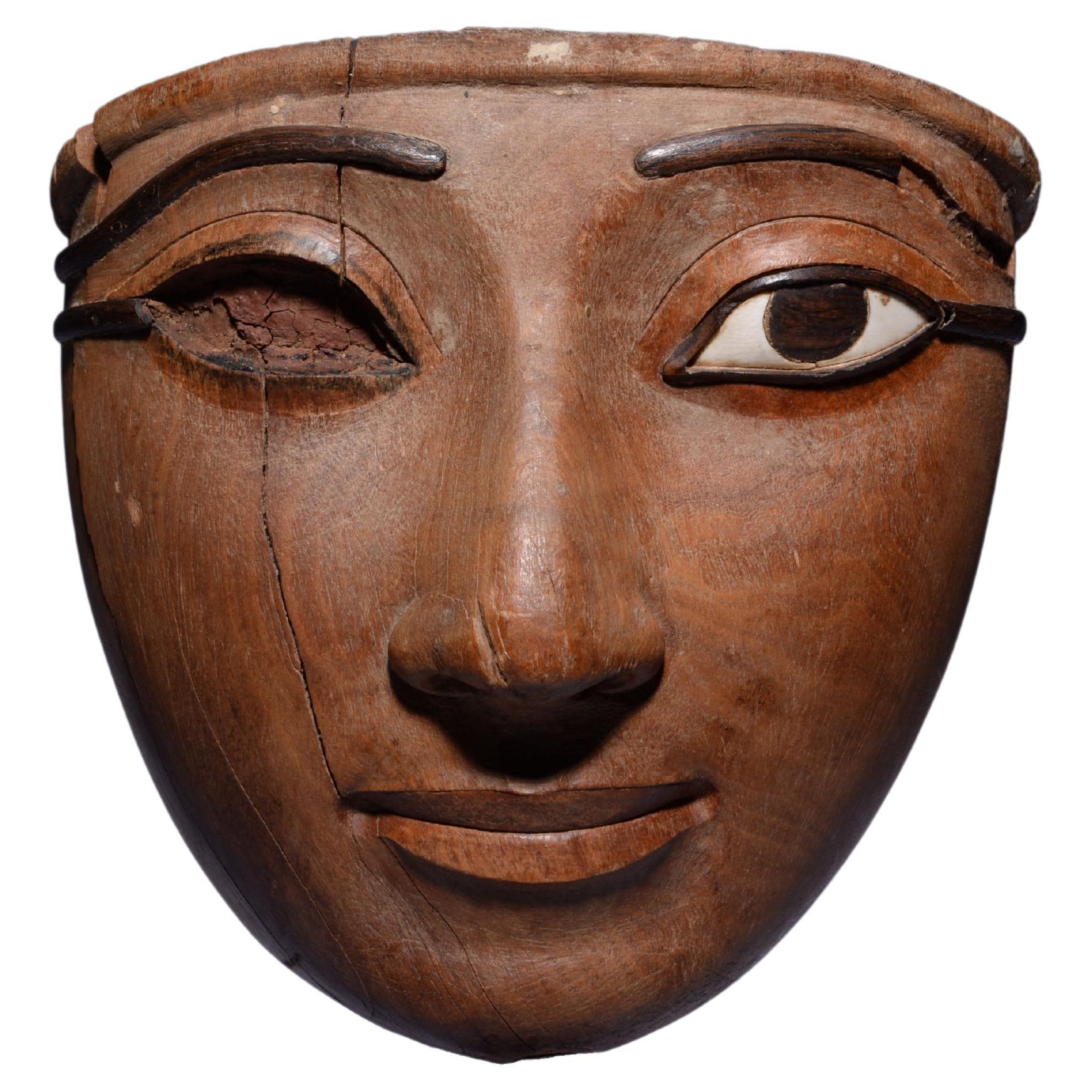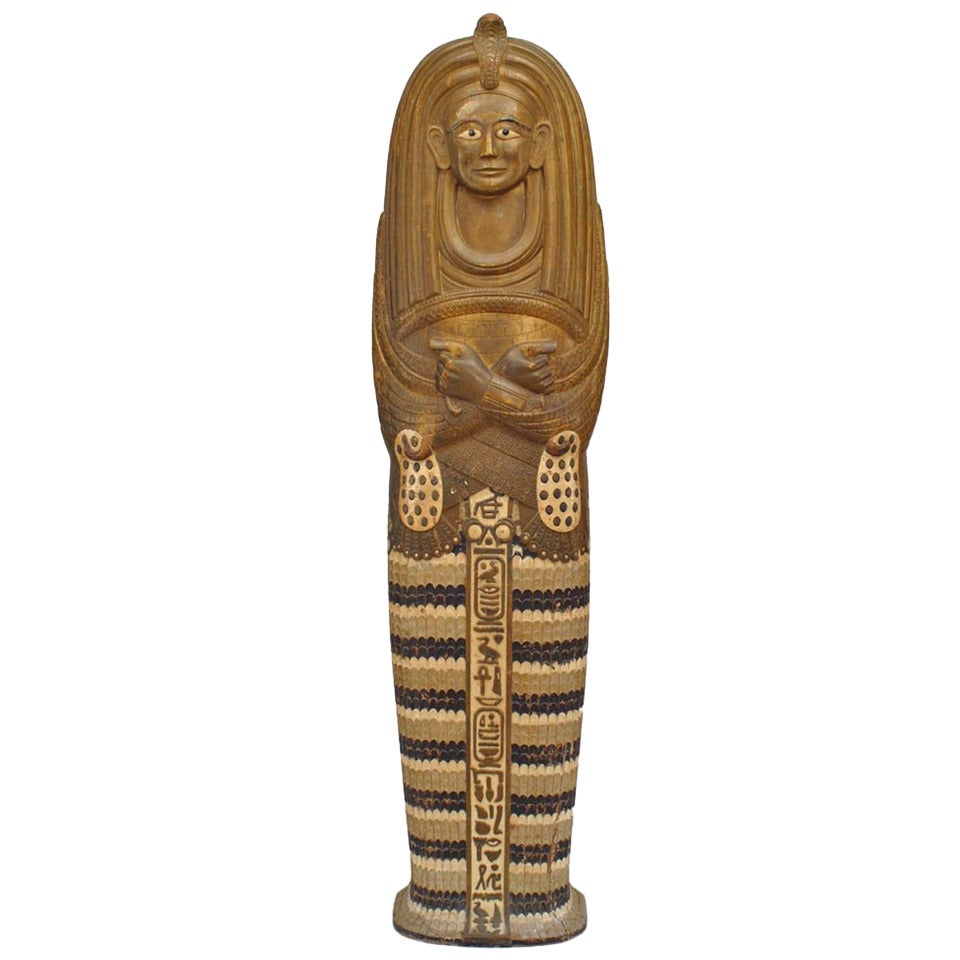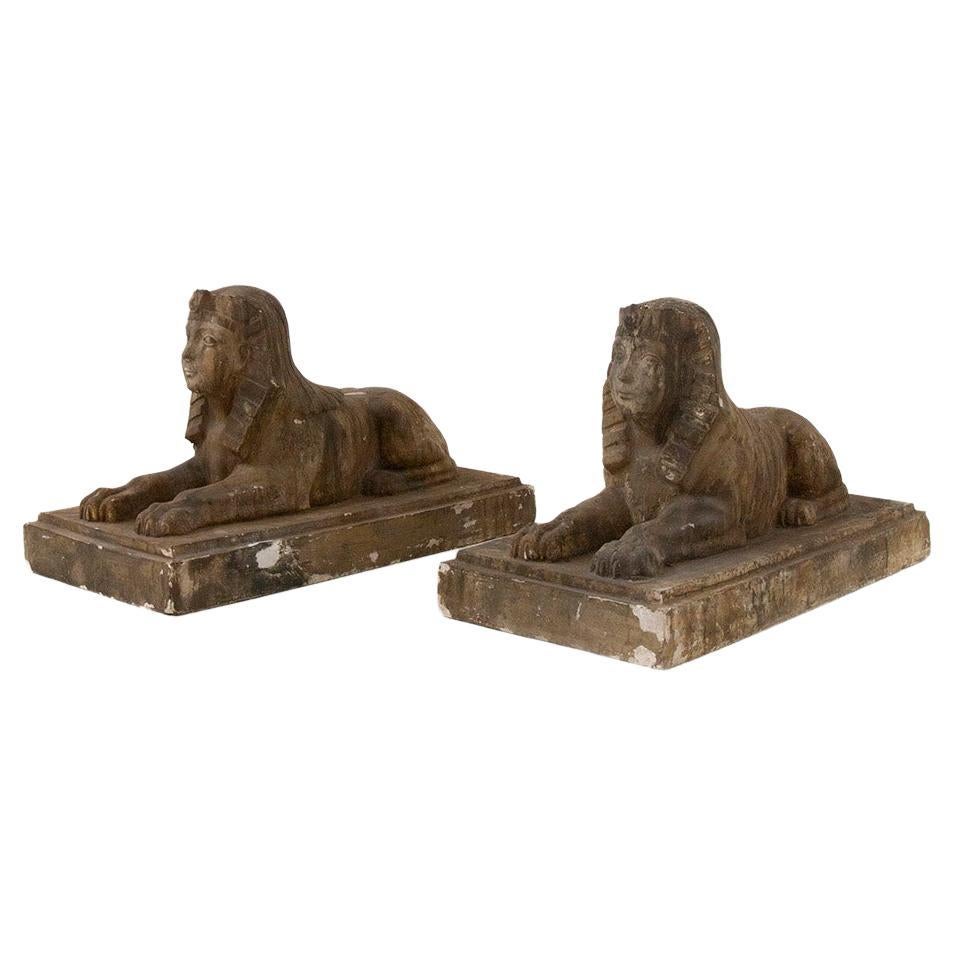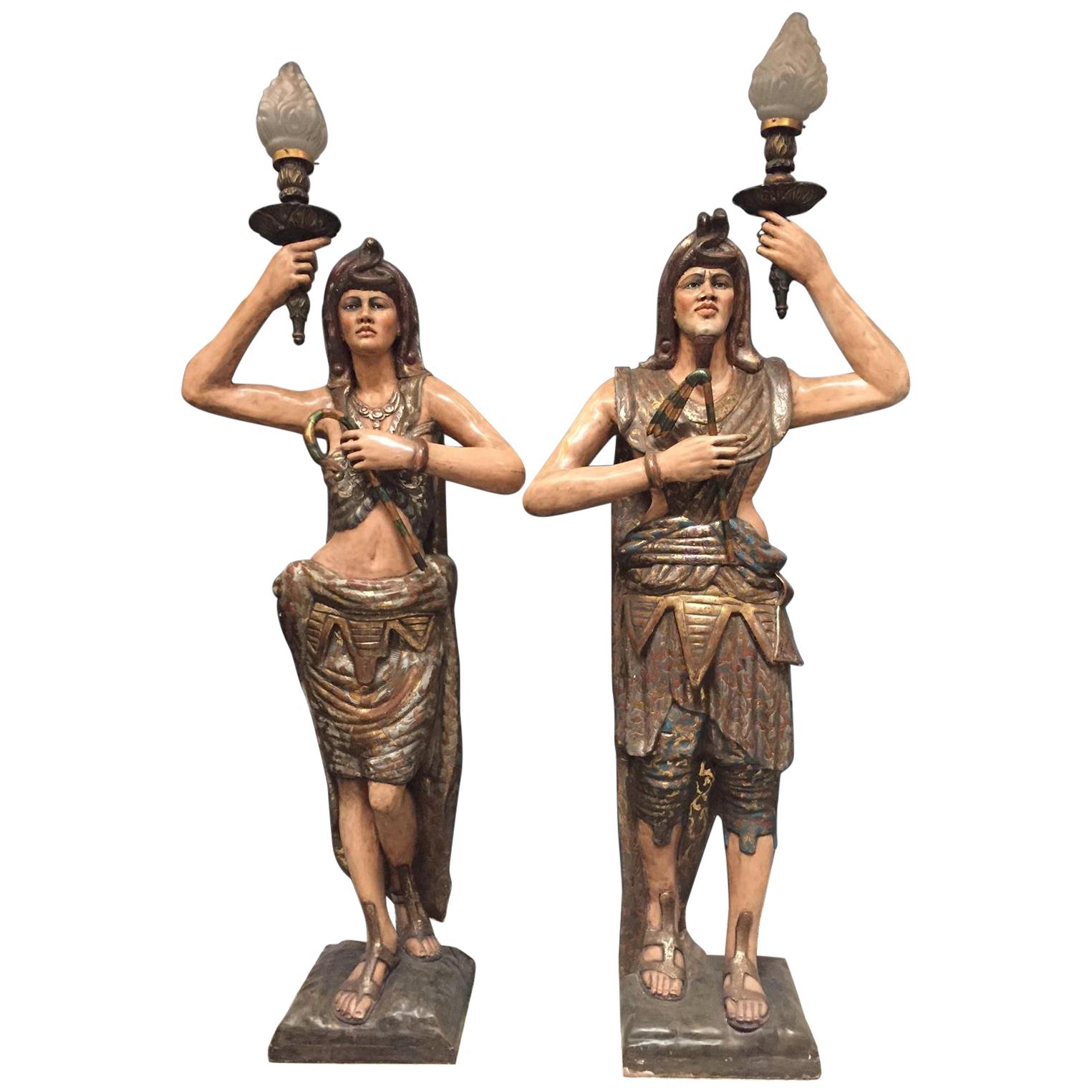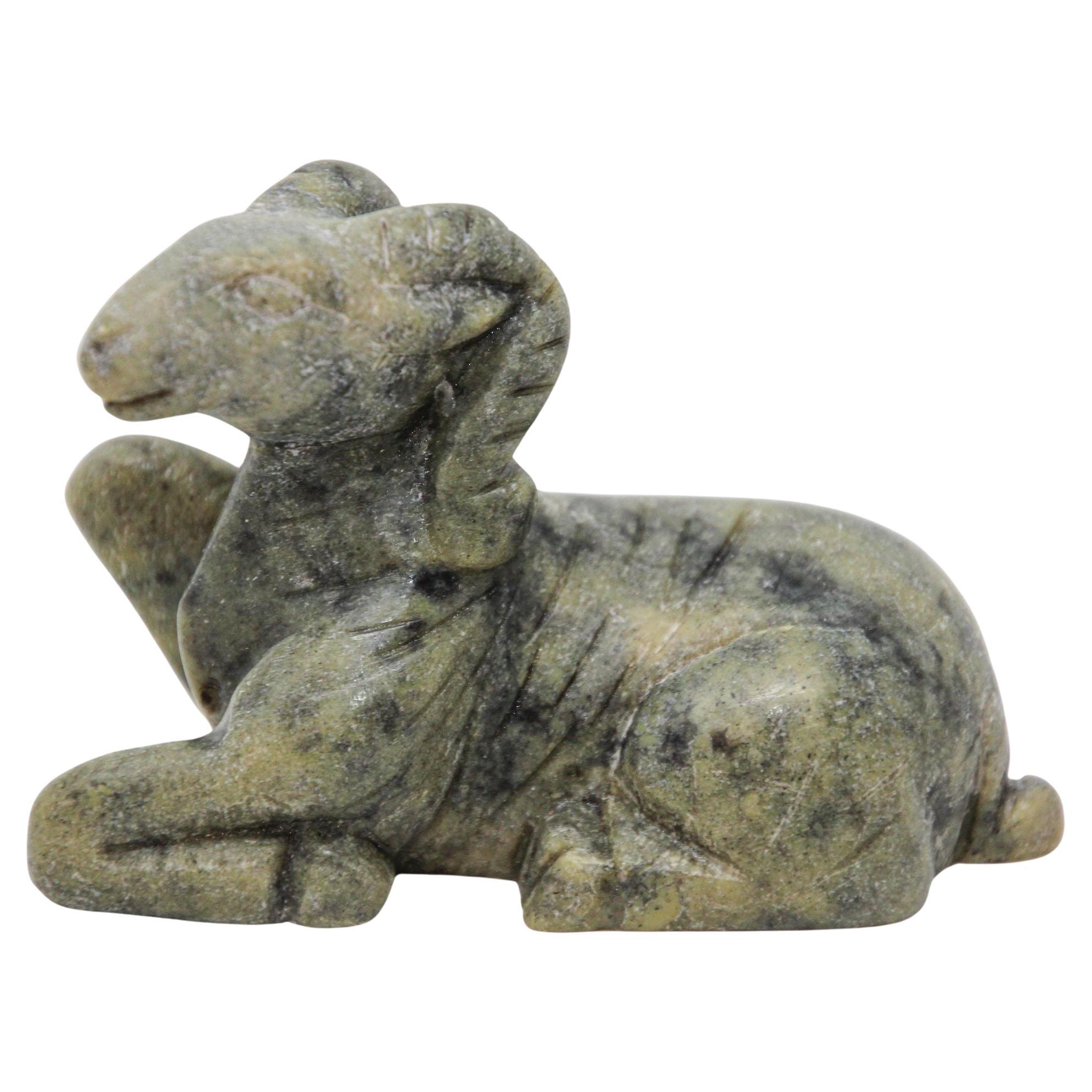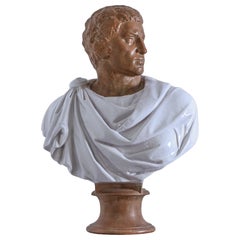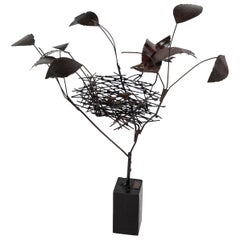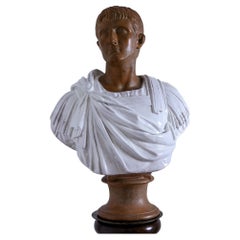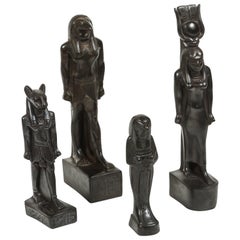
Collection of "Egyptian" Deities
View Similar Items
Want more images or videos?
Request additional images or videos from the seller
1 of 10
Collection of "Egyptian" Deities
About the Item
- Dimensions:Height: 11.25 in (28.58 cm)Width: 2.5 in (6.35 cm)Depth: 3 in (7.62 cm)
- Sold As:Set of 4
- Style:Egyptian (In the Style Of)
- Place of Origin:
- Period:
- Date of Manufacture:circa 1970s
- Condition:Wear consistent with age and use.
- Seller Location:Palm Desert, CA
- Reference Number:1stDibs: LU79773080622
About the Seller
5.0
Recognized Seller
These prestigious sellers are industry leaders and represent the highest echelon for item quality and design.
Gold Seller
These expertly vetted sellers are highly rated and consistently exceed customer expectations.
Established in 1997
1stDibs seller since 2004
277 sales on 1stDibs
Associations
20th Century Specialists
More From This SellerView All
- Terracotta Bust of Roman EmperorLocated in Palm Desert, CAThis terra-cotta sculpture no doubt depicts the bust of Roman Emperor or Senator in classical dress gazing over his left shoulder. This is a magnificently robust life size bust...Category
Vintage 1960s Italian Classical Roman Busts
MaterialsTerracotta
- Sculpture of Bird and Nest in TreeBy C. Jeré Artisan HouseLocated in Palm Desert, CAWonderful sculpture fixed to a weighted iron base. There is a stylized “tree” in steel with leaves, centered is a bird’s nest with brass eggs and a brass bird hovering over the nest....Category
Vintage 1960s American Mid-Century Modern Animal Sculptures
MaterialsBrass, Steel
- Terra-Cotta Bust of a Roman SenatorLocated in Palm Desert, CAThis terracotta sculpture depicts the bust of a Roman Senator or Emperor in armor and a gown. Hi gaze is directed at about a 45 degree angle. This is a magnificently robust life size bust...Category
Vintage 1960s Italian Classical Roman Busts
MaterialsTerracotta
- Turn of the Century Cast Venus after Bertel ThorvaldsenBy Bertel ThorvaldsenLocated in Palm Desert, CAThis turn of the century marble composite cast version of Venus after Bertel Thorvaldsen is in a wonderful state of decay. Over time she has lost both hand...Category
Early 20th Century Italian Neoclassical Figurative Sculptures
MaterialsComposition
- "Angolo Collezione" of Silver Plated Abstract Geometric Forms by SabattiniBy Lino SabattiniLocated in Palm Desert, CAWonderful collection of abstract geometric sculptural forms titled "The Collection of Angles" (Angolo Collezione) designed and made by renown Italian metalworker Lino Sabattini. Incl...Category
Vintage 1980s Italian Modern Abstract Sculptures
MaterialsSilver Plate
- Patinated Bronze Sculpture of a Kneeling Woman by Guy Charles Revol '1912-1991'By Foundry Valsuani, Guy Charles RevolLocated in Palm Desert, CAThis is an exquisite bronze sculpture depicting a kneeling woman by Guy Charles Revol. Possibly another interpretation of Venus Kneeling, this young woman is kneeling on her left knee and resting her arms on her right knee, looking over her left shoulder. The piece is signed and numbered on the bronze base. The VALSUANI Foundry Mark is also visible on the base. This is a beautiful piece to showcase on its own. "Guy Charles Revol was born 3 October 1912 , in Paris. He studied at the Beaux-Arts de Paris and was a sculptor, medallist, and designer. Revol won second prize in the Prix de Rome in 1937. His works include a granite pediment at the Hôtel de Ville in Guéret in the Creuse; a fountain for the Exposition Internationale in Paris in 1937. A low relief for the French Pavilion at the San Francisco...Category
Vintage 1940s French Mid-Century Modern Figurative Sculptures
MaterialsBronze
You May Also Like
- Collection of Three Indian Sandstone Carved Heads of DeitiesLocated in Atlanta, GAA collection of three carved sandstone heads on wood display stands from Northern India Rajasthan or Madhya Pradesh, circa 11-12th century. Fragmented from large whole-body statue, these red sandstone heads exhibit very fine carving, typical of Northern Indian Art during the medieval time. Two males and one female, they represent heavenly deities Yakshas and Yakshini. Their facial features were detailed with large almond-shape eyes under thin arched eyebrows. The males have characteristic facial hairs including curvy moustaches and tightly combed beard, both finely carved, and the female wears large spoke loop earrings. They all don fantastical hairstyles with serpent-like spiral locks and some with elaborate knots on top and above the sideburns. These deities are likely celestial musicians. A pair of full-body statues (lot 70) were offered for sale in Christie's Indian and Southeast Asian Art...Category
Antique 15th Century and Earlier Indian Archaistic Sculptures and Carvings
MaterialsSandstone
- Egyptian Head of a ManLocated in London, GBEgyptian head of a man, carved granite. 18th Dynasty, circa 1550-1292 B.C. Carved in beautiful dark granite, this head depicts an elite individual, perha...Category
Antique 15th Century and Earlier Egyptian Egyptian Busts
MaterialsGranite
- Early 20th Century Cold-Painted Bronze Entitled Egyptian Deity by Franz BergmanBy Franz BergmannLocated in London, GBAn amusing early 20th century cold painted Austrian bronze figure modelled as a seated ancient Egyptian deity hinged to reveal an erotic beauty with fine golden colour, stamped with ...Category
Early 20th Century Austrian Figurative Sculptures
MaterialsMarble, Bronze
- Khmer Sandstone Figure of a Female DeityLocated in Austin, TXA wonderfully sensual Khmer statue of a female divinity delicately carved from gray sandstone. Her face radiates a cool serenity. Almond shaped eyes ga...Category
Antique 18th Century and Earlier Cambodian Sculptures
- Pair of Chinese Gilt Deity FiguresLocated in New York, NYPair of Asian Chinese style (18/19th Cent) gilt diety / priest figures standing on lotus-form bases.Category
Antique 19th Century Chinese Export Figurative Sculptures
$17,500 / set - Exceptional Egyptian Sarcophagus MaskLocated in London, GBExceptionally Fine Wooden Sarcophagus Mask Third Intermediate Period, 21st Dynasty, circa 1069-945 BC. Acacia wood, rosewood, hippopotamus ivory Masterfully carved from a single piece of fine-grained hardwood, the present mask is characteristic of the most exquisite funerary art made during the 21st Dynasty, and was probably commissioned for a particularly high-ranking individual. The oval face displays a gently smiling mouth with full, outlined lips, furrows at the corners and a bow-shaped philtrum. The straight nose with rounded nostrils, the cheeks full and fleshy and the large, almond shaped eyes with heavy lids and tapering cosmetic lines, set below long, sweeping eyebrows. Social collapse across the Mediterranean in the Late Bronze Age meant that the 21st Dynasty in Egypt was a period of great turmoil. Trade routes were disrupted, governments collapsed, and mass migration occurred. Economic scarcity meant that traditional funerary practices in Egypt were also affected, with a lack of material and financial resources leading to the reuse of preexisting material. As a result, during the 21st Dynasty, 19th and 20th Dynasty coffins changed ownership rapidly and were heavily recycled for new purposes. Tombs were also unmarked allowing them to be shared by many people. These new practices brought forth a shift in the understanding of funerary paraphernalia. No longer important objects owned forever by the deceased, they were now simply seen as short-term transformative devices, whose symbolic and ritualistic meaning could be appropriated for others. However, paradoxically, the art of coffin-making also reached new heights during this period, and many of the richly dec- orated “yellow” coffins, characteristic of the 21st Dynasty, are remarkable works of art in their own right. Indeed, knowing that coffins were being reused throughout Egypt, the Egyptian élite set themself apart by commissioning lavish sarcophagi decorated with the images and texts meant to help guide them to the afterlife, and which would otherwise have adorned the tomb walls. As coffins were the chief funerary element which now identified the dead and allowed them a physical presence in the world of the living, their quality and appearance were of the utmost importance. The traditional coffin ensemble was made of three parts: a wooden mummy cover, which laid directly atop the mummy, an inner coffin, and an outer coffin, both made of a lid and case. Additional decorative elements, such as masks, were carved out separately and later glued or pegged to the lids. After the completion of the painted decoration, the sarcophagus was covered in a varnish to give it its yellow colour. Gilding was sometimes used for the coffins of the high priests’ families, notably on parts representing naked skin, such as the face mask. However, some of the élite tactically avoided gilding altogether as to ensure that their coffin would not be looted. When manufacturing the inner and outer coffins, particular attention was paid to the woodwork. Displaying the skill of the carpenter, this type of funerary art has largely remained unparalleled throughout Egyptian history. The principal wood used to craft the present mask is Acacia nilotica. The evergreen Egyptian acacia was considered sacred and said to be the tree of life, the birthplace of the god Horus, as well as symbolic of Osiris, the god of the dead and resurrection. The modelling of the face in the wood is superb, but the inlays also help mark this mask out as exceptional. Inlaid eyes and eyebrows were extremely rare and reserved to the finest and most expensive coffins. Traditionally, eyes were made of calcite, obsidian, or quartz, and eyebrows of coloured glass paste or bronze. Here, the pupils, eyebrows, and cosmetic lines are inlaid with Dalbergia melanoxylon, a rare type of wood which belongs to the rosewood genus. In antiquity, however, it was known as Ebony of the Pharaohs, from the Egyptian word “hbny”, meaning dark timber, because of its black, lustrous appearance. An extremely dense and hard wood requiring significant skill to work with, ebony was a luxury material highly coveted by the pharaohs themselves, to make furniture, decorative and funerary objects. The wood was imported with great effort from the southern Land of Punt, most likely modern Sudan, Ethiopia, Djibouti, and Eritrea, alongside other luxury goods such as gold and ivory. A magnificent ebony throne, recovered in the tomb of King Tutankhamun, illustrates the incredible aesthetic potential of this material and why it was so highly valued by Egyptian royalty. Only élite members of Egyptian society could have afford- ed Ebony of the Pharaoh inlays for their funerary mask. The sclerae on the present piece were once both inlaid with hippopotamus ivory. Whiter than elephant ivory, this type of ivory is also denser, and more difficult to carve. The use of this luxury material, reputed for its gleaming appearance, enhances the lifelikeness of the eyes. For the Egyptians, hippopotamus ivory was imbued with magic powers. The hippopotamus was indeed both feared and venerated due to its aggressive behaviour. Whilst the male hippopotamus was associated with danger and chaos, the female was benevolent and invoked for protection, especially of the house and of mothers and their children, through the hippopotamus goddess Tawaret. Thus, not only was hippopotamus ivory used as an inlay and to make practical objects, such as combs and clappers, but it was also used to make talismans like apotropaic wands or knives. Made during a time of scarcity where few could afford made-to-order coffins, the present mask could have only belonged to one of the highest-ranking individuals in society. Undoubtedly one of the finest Egyptian coffin...Category
Antique 15th Century and Earlier Egyptian Egyptian Figurative Sculptures
MaterialsFruitwood, Hardwood
